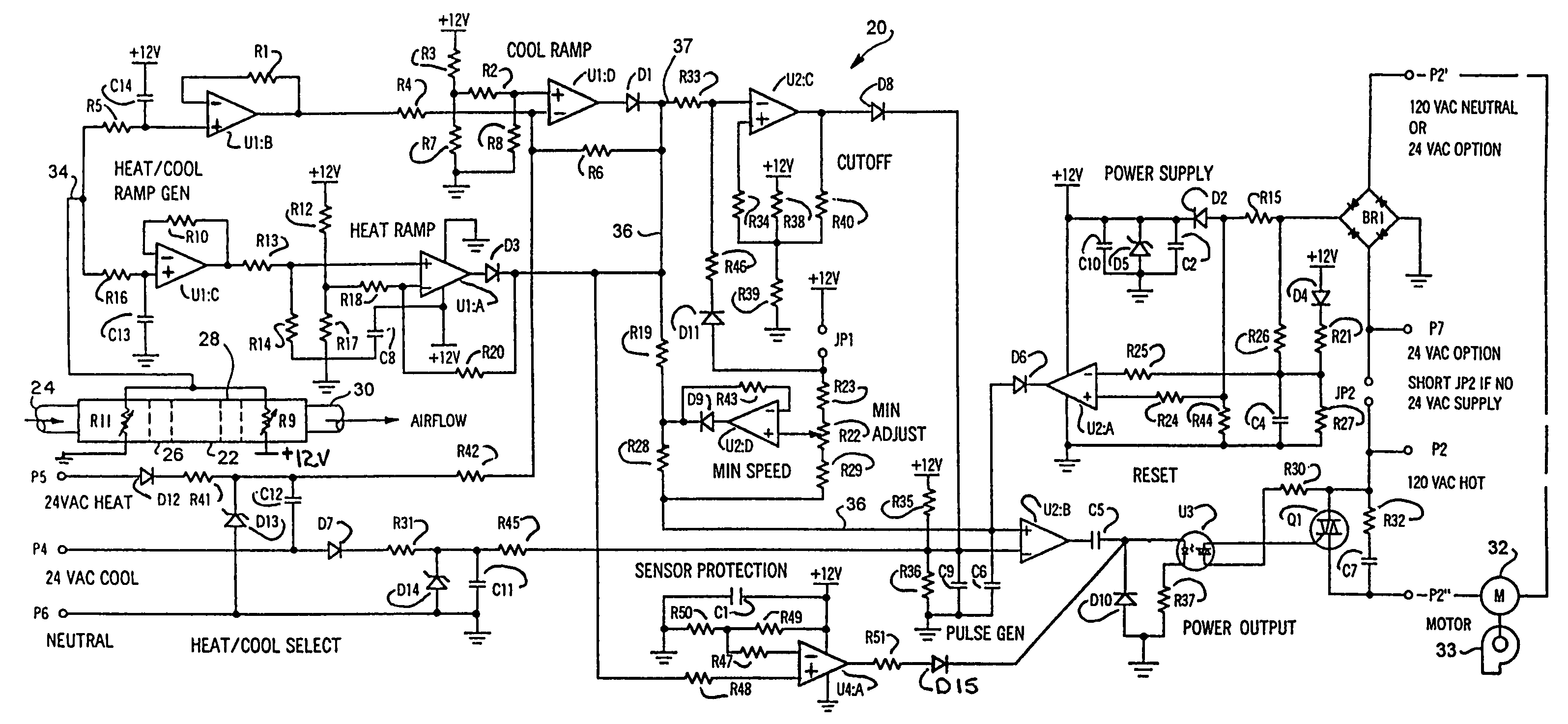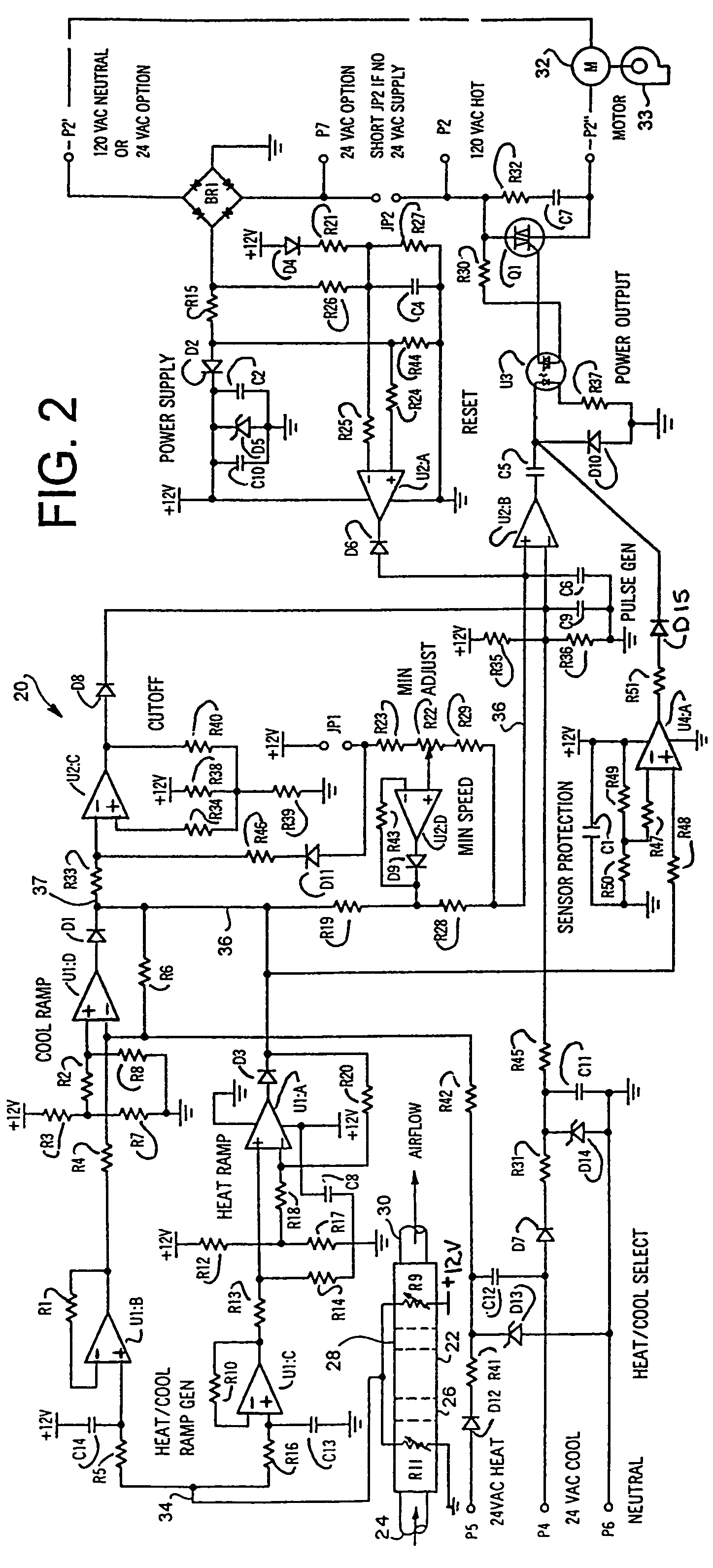Variable speed fan motor control for forced air heating/cooling system
a technology of forced air heating and cooling system, which is applied in the direction of temperatue control, starter details, dynamo-electric motor/converter starter, etc., can solve the problems of unsatisfactory noise and maximize the capture of residuals, and achieve the effect of easy adaptation
- Summary
- Abstract
- Description
- Claims
- Application Information
AI Technical Summary
Benefits of technology
Problems solved by technology
Method used
Image
Examples
Embodiment Construction
[0016]In the description which follows like elements are marked throughout the specification and drawing with the same reference numerals, respectively. Conventional elements are shown in somewhat generalized or schematic form in the interest of clarity and conciseness.
[0017]Referring to FIG. 1, the diagram illustrates a preferred change in motor speed and airflow rate through a conventional forced air heating / cooling system when the system thermostat senses the need for heating, for example, at a temperature setpoint of 78° F. in the space being heated. When the temperature sensed by the conventional system temperature sensor or thermostat drops below the setpoint of 78° F., for example, the furnace or heater turns on and the control system of the invention energizes the blower or fan drive motor at a minimum speed. When the air temperature sensed in the system ductwork increases, primarily at a location just downstream of the heater heat exchanger, as compared with the temperature...
PUM
 Login to View More
Login to View More Abstract
Description
Claims
Application Information
 Login to View More
Login to View More - R&D
- Intellectual Property
- Life Sciences
- Materials
- Tech Scout
- Unparalleled Data Quality
- Higher Quality Content
- 60% Fewer Hallucinations
Browse by: Latest US Patents, China's latest patents, Technical Efficacy Thesaurus, Application Domain, Technology Topic, Popular Technical Reports.
© 2025 PatSnap. All rights reserved.Legal|Privacy policy|Modern Slavery Act Transparency Statement|Sitemap|About US| Contact US: help@patsnap.com



